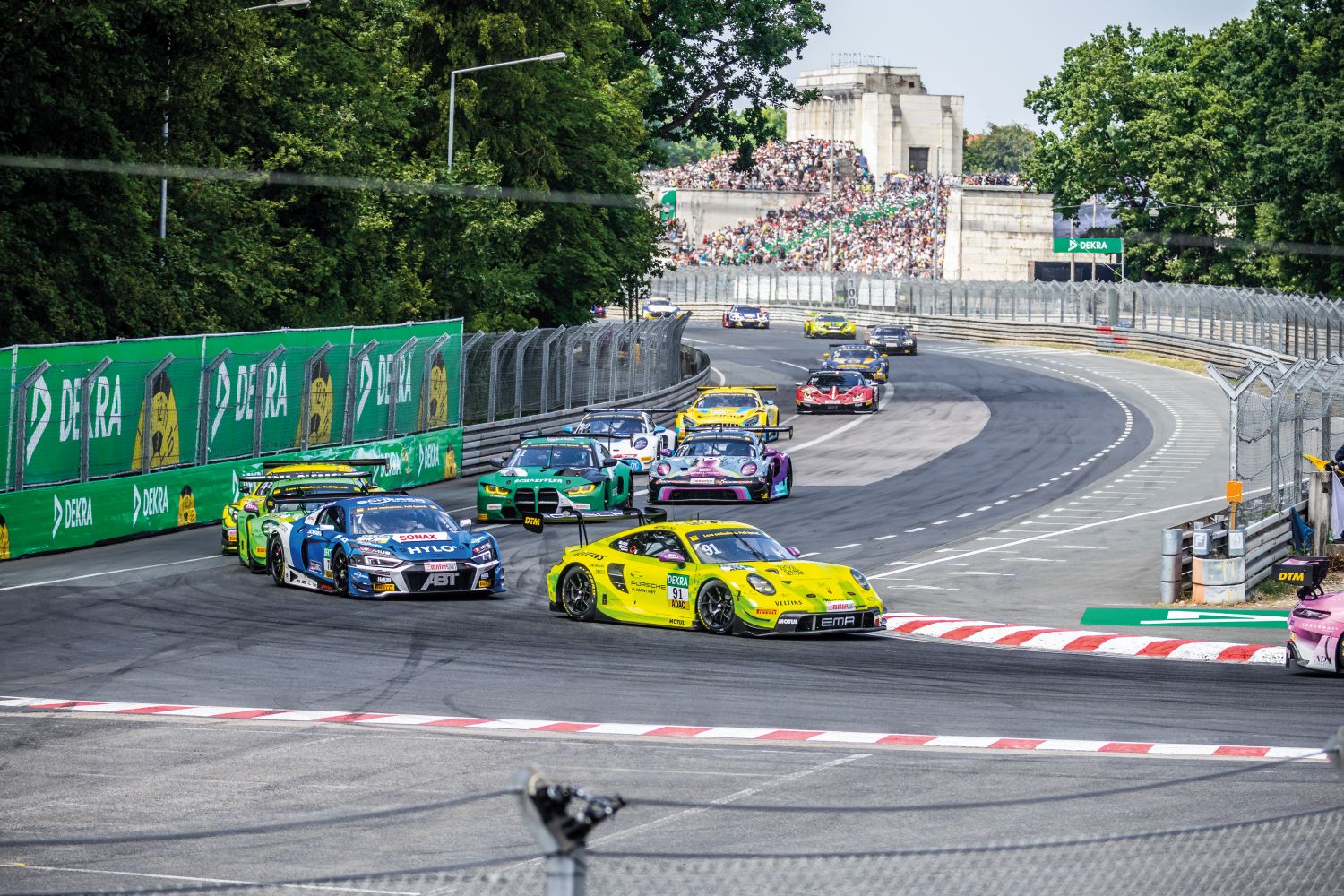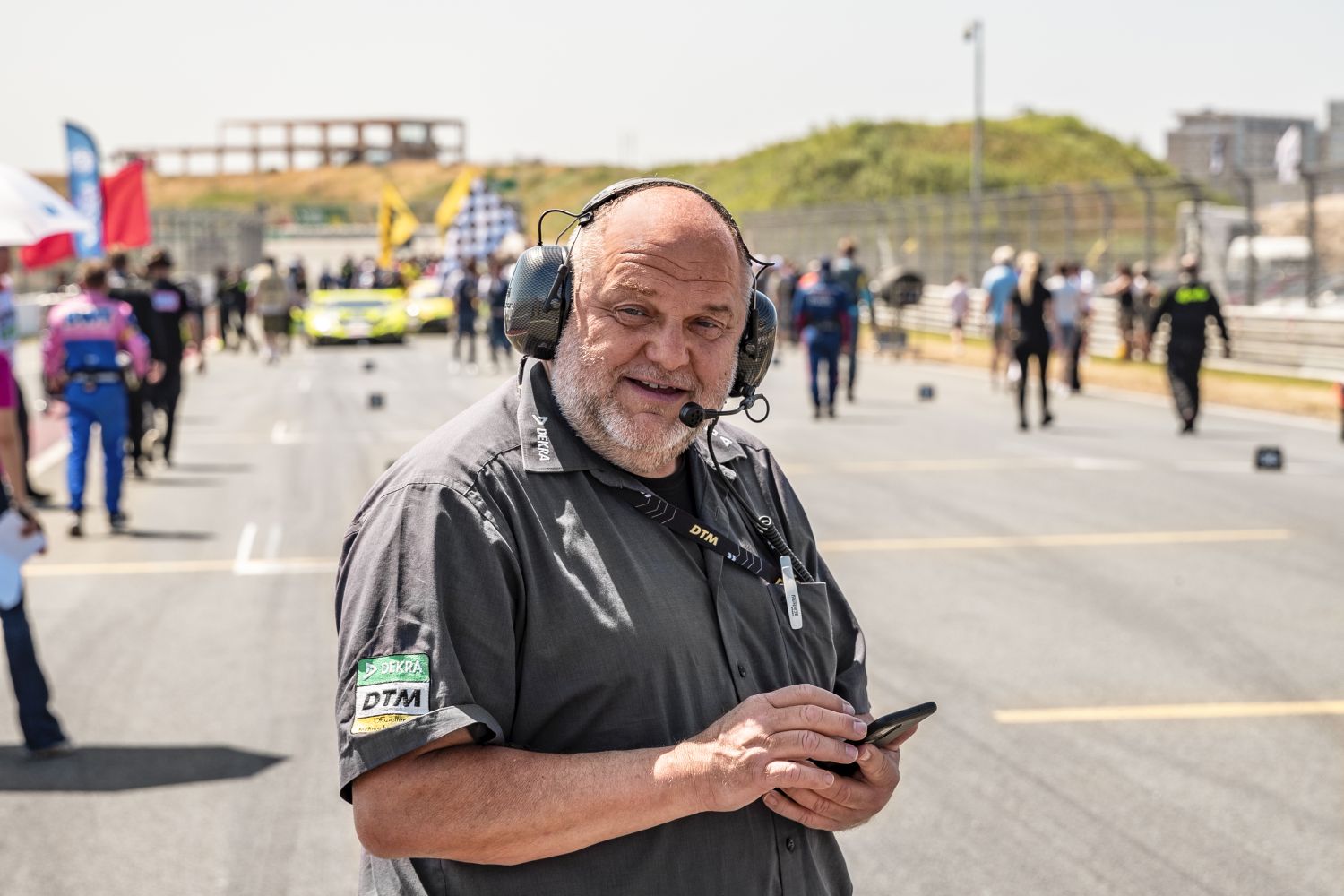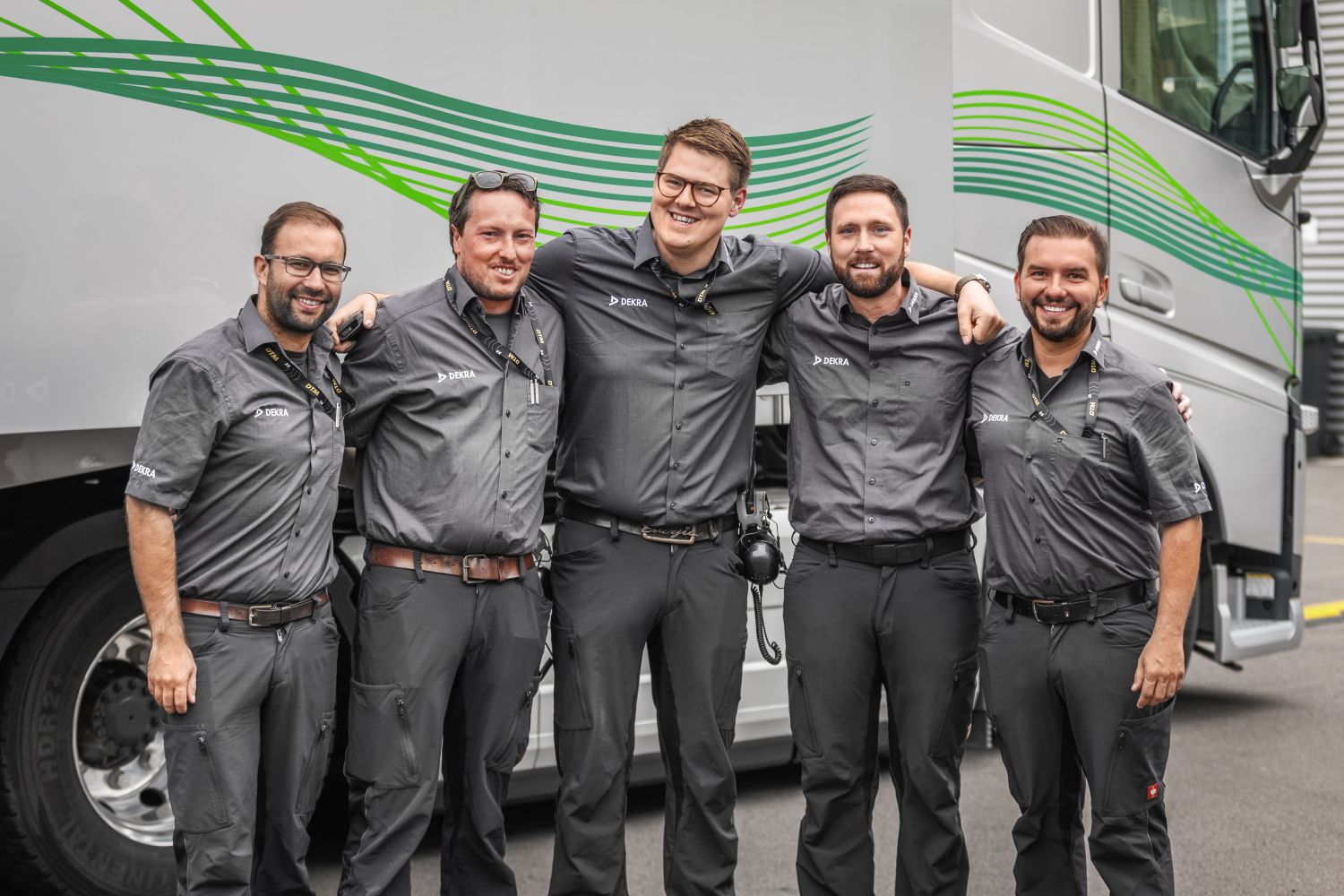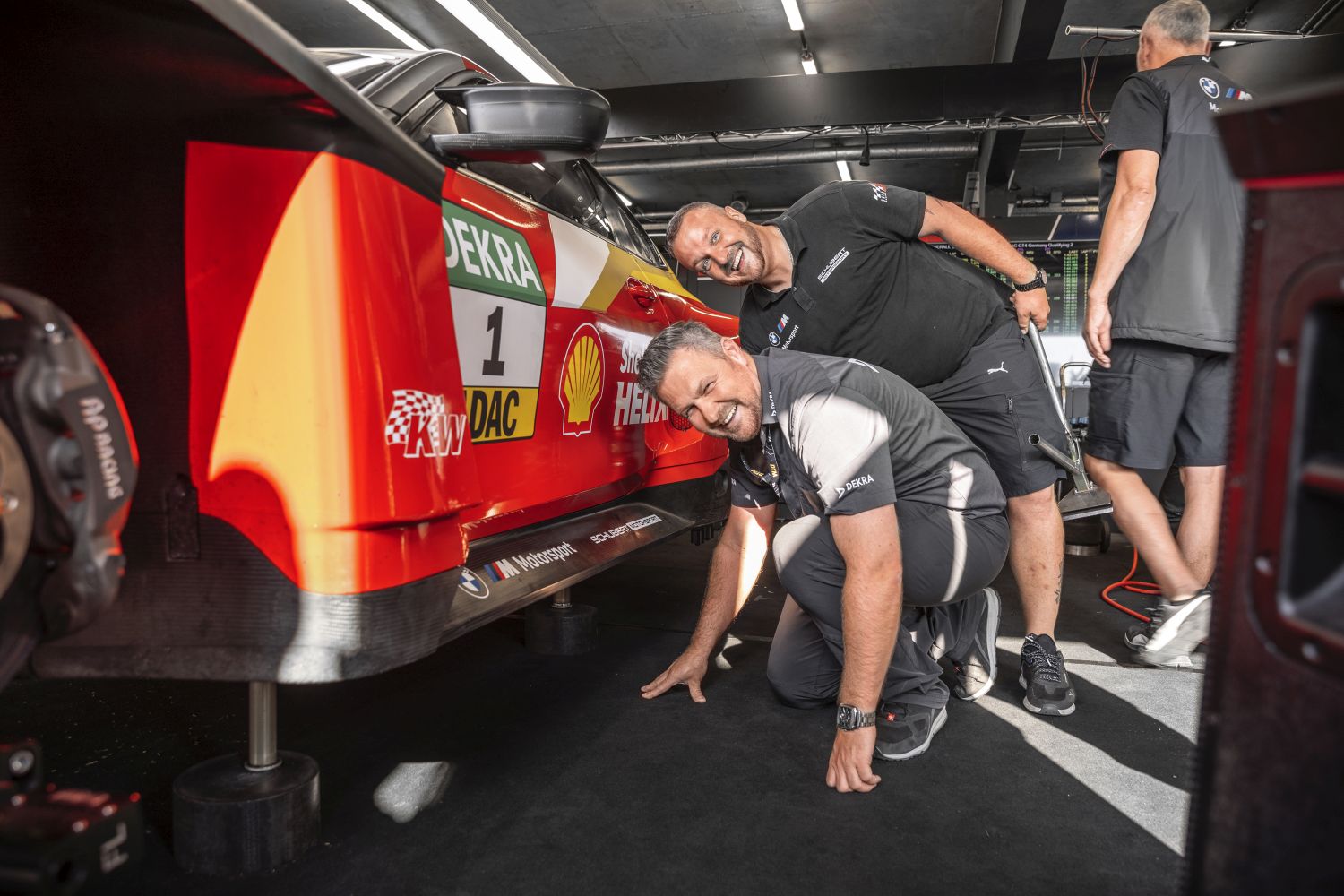Safety at Full Throttle – DEKRA in the DTM
Author: Bianca Leppert
DEKRA is a long-standing partner of the DTM racing series. And the technicians’ tasks are extremely important. But what exactly do they do during technical scrutineering and how can they ensure safety in racing? We take a look behind the scenes of the international racing series.
Motorsport arouses passion. It also moves people with its drama, in which sometimes only thousandths of a second decide between victory and defeat. Despite all the emotion, however, one aspect must never be forgotten: safety. This has improved enormously in recent decades in a sport that involves a certain amount of risk.
DEKRA also contributes – for example in the DTM racing series, which is newly being organized by the ADAC. However, the partnership between DTM and DEKRA goes back a long time – more than 30 years. The strong alliance can be recognized by the starting numbers on the various models of manufacturers such as Porsche, Ferrari, Mercedes, Lamborghini, Audi, and others, which display the DEKRA logo.
Wolfgang Dammert, Motorsport Coordinator at DEKRA, and his team are a key component of this cooperation. They have two fundamental tasks: On the one hand, they ensure the safety of all participants by conducting so-called technical scrutineering. On the other hand, they enable equal opportunity with technical inspections during and after the race weekends.
But first things first. At every event, Dammert and his team are on site two days before a single wheel turns on the racetrack. Three trailers are used to transport all the equipment for the technical scrutineering at the DTM as well as at the ADAC GT4 Germany, which is usually held at the same time and for which DEKRA is also responsible. They also house the employees’ offices.
The Thursday before every DTM race is a red-letter day on the calendar: the day of technical scrutineering. The DEKRA experts, who have all completed special training as technical scrutineers in accordance with the guidelines of the German Motor Sports Association (DMSB e.V.), check whether the DTM vehicles comply with the safety standards and regulations. “For example, we check whether the drivers’ fireproof underwear and helmets comply with the regulations and whether the seat belts, fire extinguishers, and seats in the car meet the mandated standards,” says Dammert.
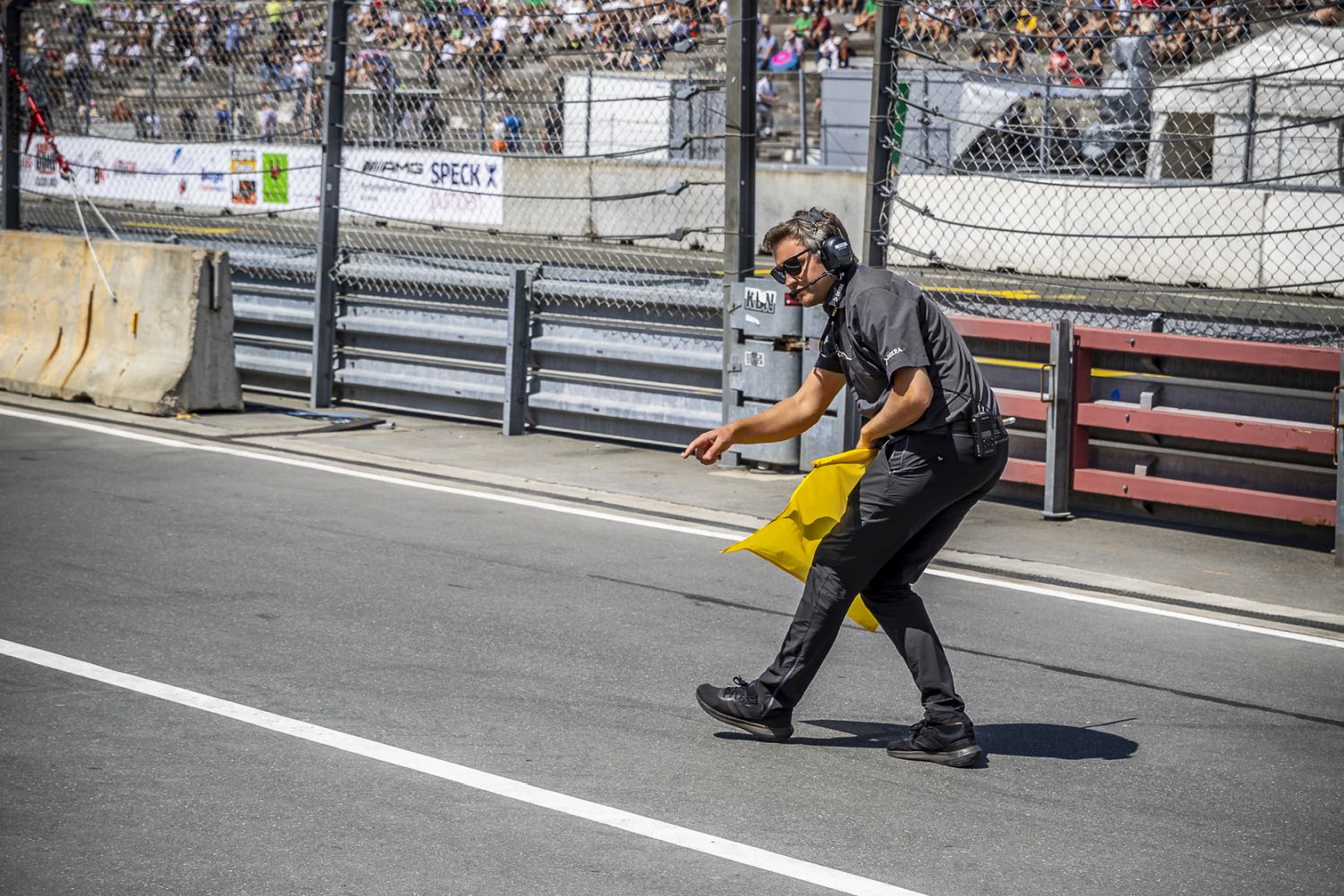

These are the checks conducted during the so-called basic scrutineering. After the qualifying runs and the race, the DEKRA team can also measure whether the rear wing height corresponds to the specifications in the car’s homologation. To do so, they use laser technology, for example. In the past, they even used augmented reality solutions, which functioned like a kind of template. However, since the DTM no longer uses the manufacturers’ racing cars individually designed for the DTM (Class 1), but the international vehicle category according to GT3 regulations, this tool is no longer used for the time being.
Even the drivers get involved: On request, the technical commissioners can test them during free practice to see how long it takes them to get out of the car. Seven seconds are allowed on the driver’s side. After all, getting out fast can be vital in the event of an accident and is not always easy due to the racing cars’ special design with roll cages and such.
If an accident does occur, the DEKRA experts are always involved in the analysis and investigation. On the one hand, to draw conclusions for the safety of all those involved, and on the other, because, in the event of minor damage, the participants usually want to get back on the track as quickly as possible after repairs. But Dammert and his team have to give their approval.
Another must for racing drivers: regular weigh-ins after training sessions and races to make sure that nobody has a weight advantage. This falls into the equal opportunity category, which is also part of DEKRA’s range of tasks. For example, Dammert and his team collect reference samples of fuel and tires before each event, so that they can be double checked against random samples during the racing weekend. After the race, there must still be a certain amount of fuel in the tank, from which another sample is taken.
Individual parameters such as gear changes, acceleration etc. are also meticulously analyzed with the help of data recording and subsequent evaluations. On every race weekend, driving dynamics specialists and drive experts from the DEKRA Technology Center in Klettwitz are on site to support the data analysts. For example, to always be one step ahead in the event of a dispute. “It’s often a kind of race against time with the engineers of the respective teams,” says Dammert. “Because, of course, they know their cars inside and out. But we have to try to stay even better informed about any loopholes or gray areas in the regulations.”
No wonder that all DEKRA experts have the relevant training. Dammert, for example, studied aerospace engineering. The other members of the team must also have studied a technical profession in the automotive sector in order to have the relevant know-how. So that nothing stands in the way of the mission to ensure safety and fairness in motorsports.
About the DTM:
In the DTM, 30 drivers compete against each other in various vehicles in the GT3 category. The brands represented include BMW, Audi, Mercedes, Porsche, Ferrari, and Lamborghini. The racing series includes a total of eight race weekends, each with two races, on tracks like the DEKRA Lausitzring, Hockenheimring, Nürburgring, and Red Bull Ring.

